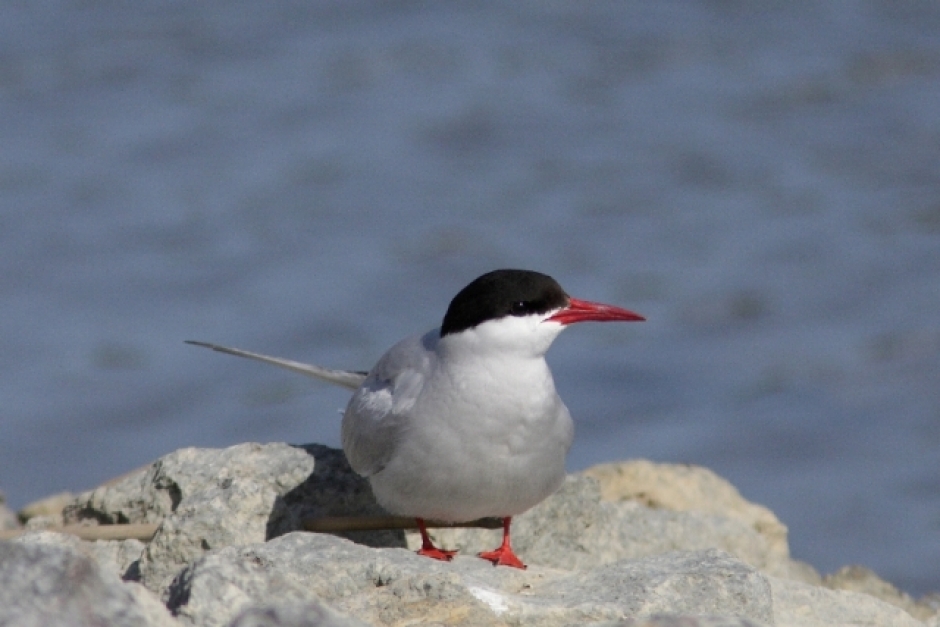Arctic Tern
Sterna paradisaea

General information. The arctic tern has one of the longest migratory periods of all bird species. During autumn, the birds nesting in Finland head off for South Africa and continue south to the oceans surrounding Antarctica. This expedition amounts to a total of more than 30 000 km per year. Furthermore, the arctic tern has a long life span, living up to 20 years. This longevity makes the arctic tern a true master of the skies. The Arctic tern is a protected species under the European Union bird directive.
- Length about 35 cm
- Nests on the ground
- Winters in Africa and Antarctica
- Feeds on fish
Habitat. The distribution of nesting arctic terns in Finland is separated into two main and area-specific divisions; along streams in Lapland and southern coastal areas. The main population concentration is focused towards the outer archipelago, where the species nests in colonies upon islands and skerries. Common terns, black-headed gulls and common gulls often nest alongside the arctic tern.
Distribution in Vaasa. Considering its distribution, the arctic tern is more common than the common tern in Vaasa. It was observed in roughly 160 survey blocks during the nesting season. The species is evenly distributed along the entire coast, from the inner archipelago to the most distant reefs of the outer archipelago. Distribution map is not published due to species protection reasons.
